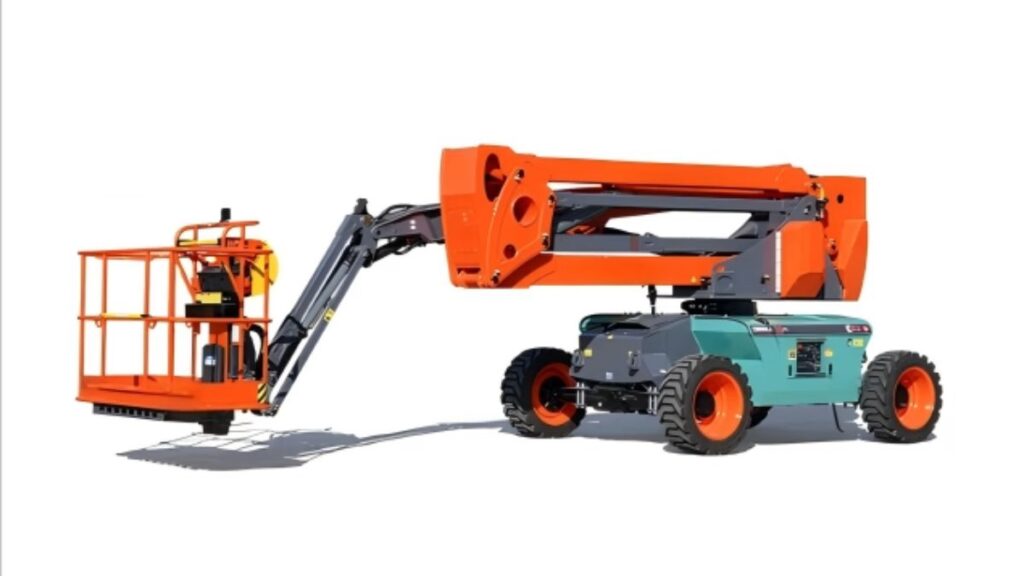Introduction
In the world of modern construction, maintenance, and industrial work, reaching elevated areas safely and efficiently is a critical concern. Traditional access methods such as scaffolding and ladders may offer some elevation, but they come with a range of limitations—reduced mobility, time-consuming setup, and increased safety risks. For tasks requiring height, horizontal outreach, and flexibility, boom lifts have become the go-to solution.
Boom lifts are essential for a variety of jobs, from installing signage and lighting to conducting building inspections and tree trimming. But owning such equipment outright is not always practical, especially for short-term or one-off projects. That’s where boom lift rental comes into play—providing businesses and contractors with affordable, flexible access to specialized aerial equipment.
This comprehensive guide explores the different types of boom lifts, their advantages, best practices for usage, and why renting may be the smarter alternative to purchasing.
Understanding Boom Lifts
A boom lift is a type of aerial work platform (AWP) that enables personnel and materials to be lifted to elevated work areas. Unlike other lifting equipment that only offers vertical movement, boom lifts provide both vertical and horizontal outreach. This feature is particularly useful when obstacles, such as walls or machinery, are in the way.
The core components of a boom lift include:
- Base: Wheeled or tracked base for stability and movement.
- Boom Arm: An extendable or articulating arm that allows reach.
- Platform/Bucket: A safe working area for personnel and tools.
- Control System: Located on the platform, allowing full operation from above.
Boom lifts are highly versatile and can be adapted for both indoor and outdoor tasks, depending on the power source (electric or diesel), tire type, and platform size.
Types of Boom Lifts
There are several types of boom lifts, each designed for specific worksite needs. Understanding the differences can help you make an informed decision when planning a project or considering boom lift rental.
1. Articulating Boom Lifts
Also known as knuckle booms, these lifts have multiple jointed sections, allowing the arm to bend and maneuver around obstacles. This makes them ideal for tight or congested spaces where straight-line access is not possible.
2. Telescopic Boom Lifts
These lifts feature a straight arm that extends directly outward. Telescopic boom lifts provide maximum horizontal reach and are commonly used in open areas where distance access is more important than maneuverability.
3. Trailer-Mounted Boom Lifts
Compact and easy to transport, these lifts are hitched to a vehicle and towed to the job site. They’re perfect for small-scale or temporary projects.
4. Spider Lifts
Designed for ultra-compact spaces, spider lifts use stabilizing legs and are light enough to operate on delicate floors or uneven terrain. Their small footprint and portability make them ideal for indoor applications.
Common Applications of Boom Lifts
Boom lifts are suitable for a wide range of industries and use cases. Their flexibility, safety, and height capabilities make them invaluable for:
- Construction – Lifting materials, workers, or tools to elevated work areas.
- Building Maintenance – Window washing, roof repairs, gutter cleaning.
- Tree Work – Trimming tall trees or removing dangerous branches.
- Event Setup – Installing lighting, sound systems, and banners at height.
- Utility Services – Powerline inspection, streetlight maintenance, and pole installation.
- Telecommunications – Mounting antennas or running cables on towers and buildings.
Benefits of Using Boom Lifts
Boom lifts bring substantial advantages over other access equipment. These benefits extend across safety, productivity, and job quality.
1. Increased Reach and Accessibility
The ability to extend both vertically and horizontally allows workers to access areas that would otherwise be difficult or impossible to reach.
2. Enhanced Safety
Modern boom lifts are equipped with safety features such as fall arrest anchor points, guardrails, emergency shut-off systems, and tilt sensors. These elements significantly reduce the risk of accidents when compared to ladders or scaffolds.
3. Improved Efficiency
Boom lifts allow for rapid repositioning and easy movement across worksites. This reduces setup time and allows for more work to be done in less time.
4. Multi-Person Platforms
Many boom lifts can support two or more people, along with tools and materials, improving collaboration and reducing the number of lifts required per task.
5. Precision and Control
With controls located in the platform, operators can make minute adjustments to positioning while working at height. This precision helps in tasks requiring accuracy, such as electrical installations or painting.
Why Choose Boom Lift Rental Over Purchase
While some large companies may opt to purchase boom lifts for daily use, renting offers considerable advantages—especially for small to medium-sized businesses or those with occasional needs.
1. Cost Efficiency
Buying a boom lift can cost tens of thousands of dollars, not including maintenance, storage, and insurance. Boom lift rental offers access to the same equipment at a fraction of the cost, making it an attractive option for short-term projects.
2. Flexibility
Every project is different. Renting allows you to select a specific model with the right reach, power source, and load capacity. Once the project is complete, there’s no need to store or maintain the equipment.
3. Access to Modern Equipment
Rental companies typically offer the latest equipment with up-to-date safety and operational features. You’ll avoid the risk of using outdated or underperforming machinery.
4. No Maintenance Hassles
Routine maintenance and unexpected repairs are handled by the rental provider. This eliminates downtime and removes the responsibility from your team.
5. Convenient Delivery and Pickup
Most rental services offer transportation, delivering the lift to your worksite and retrieving it when the job is finished. This simplifies logistics and saves time.
How to Choose the Right Boom Lift
Selecting the right boom lift for your job is crucial. Here are key factors to consider:
- Maximum Height Required – Determine how high the work area is and ensure the lift can reach it.
- Horizontal Reach Needs – If you need to reach across obstacles, articulating or telescopic lifts are ideal.
- Terrain Type – For uneven ground, opt for rough-terrain models with stabilizing outriggers.
- Power Source – Use electric models for indoor projects and diesel for outdoor tasks.
- Load Capacity – Ensure the lift can safely support the number of workers and weight of tools needed.
Safety Practices for Boom Lift Operation
Even the best equipment must be used responsibly. Here are some essential safety practices:
1. Proper Training
All operators should be certified and trained in safe boom lift usage. This includes understanding controls, stability limits, and emergency procedures.
2. Personal Protective Equipment (PPE)
Workers must wear appropriate PPE, including hard hats, harnesses, and high-visibility clothing. Safety harnesses should always be secured to designated anchor points.
3. Pre-Operation Inspection
Before use, inspect the boom lift for mechanical issues, fluid leaks, control malfunctions, and tire condition. Report and fix any problems before proceeding.
4. Secure the Area
Establish a safety perimeter with cones or tape to prevent unauthorized access to the lift’s operating zone.
5. Monitor Environmental Conditions
Avoid using the lift in high winds, rain, or icy conditions, as weather can affect stability and traction.
Boom Lift Rental Costs
Rental costs vary depending on the type of lift, height range, rental duration, and additional services. Here is a general pricing guide:
| Boom Lift Type | Daily Rate | Weekly Rate | Monthly Rate |
| Articulating Boom (45 ft) | $250 – $400 | $800 – $1,200 | $2,500 – $3,500 |
| Telescopic Boom (80 ft) | $400 – $700 | $1,200 – $1,800 | $3,800 – $5,500 |
| Trailer-Mounted Boom | $150 – $300 | $500 – $800 | $1,200 – $2,000 |
Additional charges may apply for fuel, delivery, operator training, or damage waivers.
Tips for a Smooth Rental Experience
- Book Early: Availability may be limited during peak construction seasons.
- Clarify Terms: Understand all costs, including overage fees and insurance requirements.
- Inspect Equipment on Arrival: Note any damage and review operational readiness with the provider.
- Train Your Crew: Ensure all users know how to operate the lift safely and efficiently.
Conclusion
Boom lifts have become indispensable tools for working at height across many industries. They offer unmatched reach, flexibility, and safety—qualities that improve project outcomes and reduce risk. But the decision to own or rent depends on your specific needs.
For most short-term or occasional jobs, boom lift rental is a practical, cost-effective solution. It provides access to state-of-the-art equipment without the burdens of ownership, allowing teams to stay productive and focused on what matters most: completing the job safely and on time.
Whether you’re managing a complex construction site, handling property maintenance, or setting up for an event, renting a boom lift offers the performance and convenience







